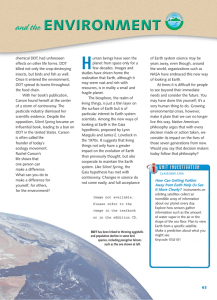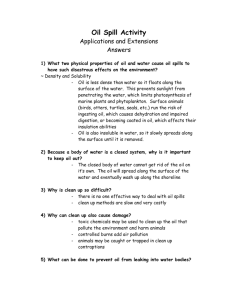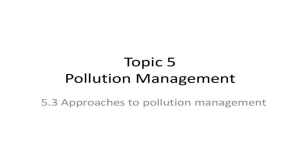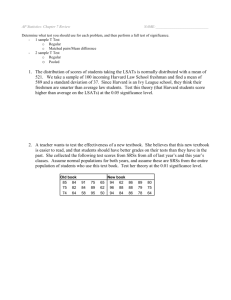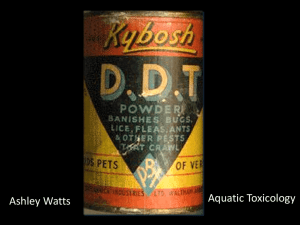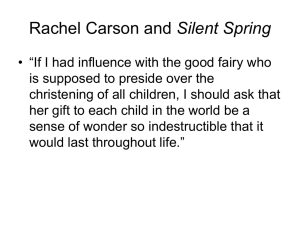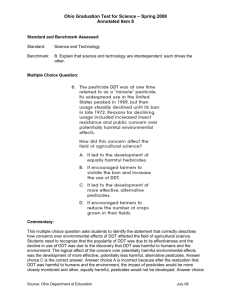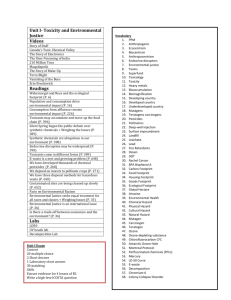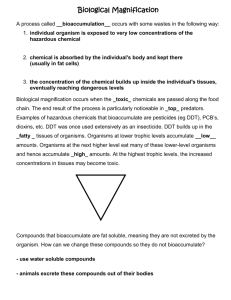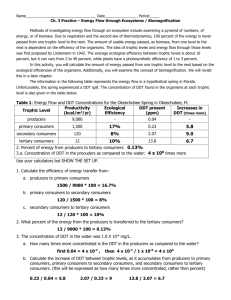5.3 Approaches to Pollution Management
advertisement
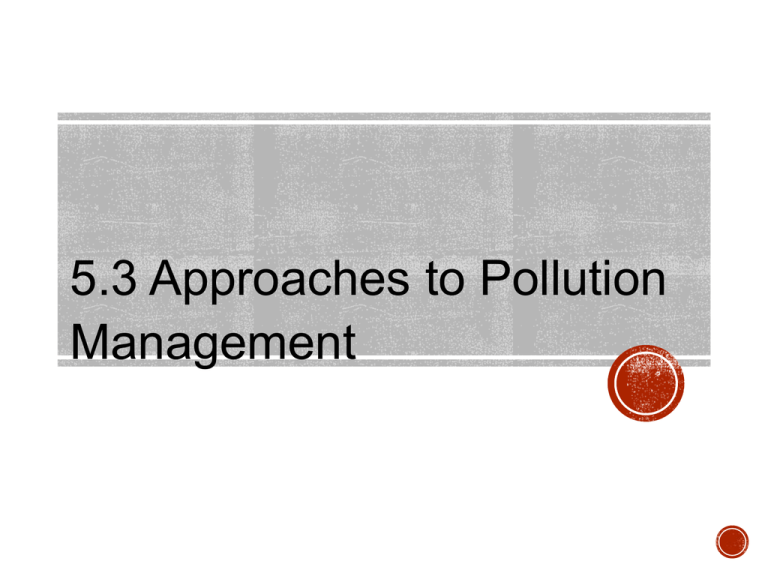
5.3 Approaches to Pollution Management • 5.3.1 Outline approaches to pollution management with respect to figure 5. • 5.3.2 Discuss the human factors that affect the approaches to pollution management. • 5.3.3 Evaluate the costs and benefits to society of the World Health Organization’s ban on the use of the pesticide DDT. Assessment Statements 5.3.1 Management (3 R’s) 5.3.1 Three-Level Model Replace ● ● ● Alternatives to the pollutant o Biodegradable packaging o New refrigerants o Hybrid vehicles Alternative choices in lifestyle o Paper or plastic o Water bottles Reduce, reuse, recycle o Ordered according to what is best o Electronics http://b2bbusinessnews.files.wordpr ess.com/2011/11/biodegradableplastic.jpeg http://inhabitat.com/compostablepackaging-test-bambu-platesbreakdown/ 5.3.1 Three-Level Model Regulate ● ● http://www.csdimarioenvironmental.com/resources/Environmental_Law_7_09.j pg.opt423x423o0,0s423x423.jpg Setting/imposing standards o EPA (US) o UNEP o Ministry of Environmental Protection (China) Extraction techniques o “Clean coal” o Sequestration o Catalytic converter 5.3.1 Three-Level Model Restore (most expensive) http://www.nyc.gov/html/dcp/gif/about/prkillsco ntextmap.jpg ● ● ● ● ● ● Extracting pollutant from ecosystem US Superfund Chernobyl, Ukraine Replanting/restocking ecosystem Chuquicamata, Chile Fresh Kills Landfill → Freshkills Park (NY, USA) 5.3.2 Human Factors “It is unrealistic to expect human activities to cease to pollute the environment.” Davis & Nagle Economic systems Production requires raw materials Cultural values May not be willing to change May not know how to change Political systems Jobs or environment? 5.3.3 DDT & the WHO ● ● ● ● http://www.icangarden.ca/images/Jpgs/ART/Workersbeingspr ayedDDT.jpg Dichlordiphenyltrichloroethane Used extensively during WWII to control lice and mosquitoes Insecticide in agriculture 1955 – WHO began program to eradicate malaria (with DDT) o Resistance evolved after 6 years o Sri Lanka, Pakistan, Turkey, central America, DDT has lost its effectiveness 40,000 tons used worldwide each year (1950-1980) 5.3.3 DDT ● 4-5000 tons produced each year o o o India, China, North Korea India largest consumer Applied to inside of homes ● Inside Residual Spraying (IRS) Cheap, persistent, and works well Malaria kills 2.7 million people/year o o o Mostly children under 5 Infects 300-500 million/year Disease of the “poor” No research funding 5.3.3 DDT Issues POP (persistent organic pollutant) Absorbed by soils Half-life (22 days → 30 yrs) Hydrophobic (not water soluble) Soluble in lipids (fats) Breaks down into DDE and DDD DDE – Dichlorodiphenyldichloroethylene Reproductive toxicants for birds Neurotoxic http://arcticportal.org/ima ges/stories/Logo_Organi zation/pops_migration.gi f Carcinogenic Skin irritant h t t p : / / w w w . s t a n DDD – Dichlorodiphenyldichloroethane 5.3.3 DDT Silent Spring 1962 -Rachel Carson – American biologist Widespread spraying killing wildlife Cancer in humans Biomagnifies and bioaccumulates Agricultural use banned in 1970’s and 1980’s (though not as a vector control) First banned in Hungary in 1968 Norway/Sweden 1970, US 1972, UK 1984 http://upload.wikimedia.org/wikipedia/ commons/thumb/f/f4/RachelCarson.jpg/300px-Rachel-Carson.jpg http://sustainable-nano.com/2013/12/17/the-cautionarytale-of-ddt-biomagnification-bioaccumulation-andresearch-motivation/ 5.3.3 DDT Malarial cases are increasing, so what do we do?
